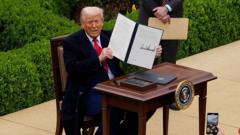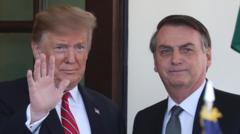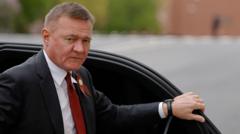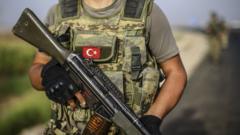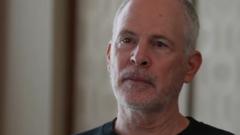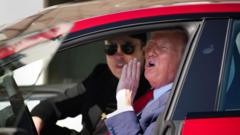Amid ongoing tensions between Russia and Ukraine, President Vladimir Putin's declaration of a three-day ceasefire has raised questions about its sincerity. Critics view this ceasefire, from May 8 to 10, as another PR tactic rather than a genuine effort for peace.
Ceasefire or Public Relations Stunt? Analyzing Putin's Latest Truce
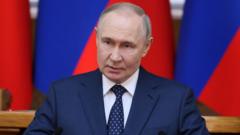
Ceasefire or Public Relations Stunt? Analyzing Putin's Latest Truce
Russia's President Vladimir Putin announces a three-day unilateral ceasefire, but motives remain uncertain amidst skepticism and accusations.
The latest ceasefire comes after accusations during a previous Easter truce where both sides claimed violations. Putin initially presented the 30-hour pause as a "humanitarian" gesture, positioning Russia as a Pacifier in the conflict. In a recent statement, the Kremlin called for military actions to cease for 72 hours, arguing that humanitarian considerations required it and urging Ukraine to reciprocate.
Ukraine, however, has expressed skepticism. Ukrainian Foreign Minister Andrii Sybiha challenged the conditions, asking why Russia could not initiate an immediate ceasefire. He urged for a longer truce of at least 30 days, indicating mistrust in Moscow's intentions.
Criticism escalated as former U.S. President Donald Trump remarked on social media about Russia’s aggression, hinting that Putin may not desire a genuine peace. The Kremlin's three-day truce appears to be an attempt to reposition Russia as the responsible party in the ongoing conflict. However, White House Press Secretary Karoline Leavitt highlighted that President Trump is looking for a permanent cessation of hostilities and expressed concerns about escalating frustrations with both nations.
As the situation evolves, skepticism remains about Russia's motives and whether this ceasefire will yield any genuine progress towards lasting peace.
In the wider context, the U.S. previously urged both countries to agree on a more extended ceasefire, raising questions about the prospects for negotiations. With mixed signals coming from Russian officials, including attempts to blame Ukraine for rejecting the ceasefire, the international community observes these developments closely, hoping for a resolution to the protracted conflict.
Ukraine, however, has expressed skepticism. Ukrainian Foreign Minister Andrii Sybiha challenged the conditions, asking why Russia could not initiate an immediate ceasefire. He urged for a longer truce of at least 30 days, indicating mistrust in Moscow's intentions.
Criticism escalated as former U.S. President Donald Trump remarked on social media about Russia’s aggression, hinting that Putin may not desire a genuine peace. The Kremlin's three-day truce appears to be an attempt to reposition Russia as the responsible party in the ongoing conflict. However, White House Press Secretary Karoline Leavitt highlighted that President Trump is looking for a permanent cessation of hostilities and expressed concerns about escalating frustrations with both nations.
As the situation evolves, skepticism remains about Russia's motives and whether this ceasefire will yield any genuine progress towards lasting peace.
In the wider context, the U.S. previously urged both countries to agree on a more extended ceasefire, raising questions about the prospects for negotiations. With mixed signals coming from Russian officials, including attempts to blame Ukraine for rejecting the ceasefire, the international community observes these developments closely, hoping for a resolution to the protracted conflict.




